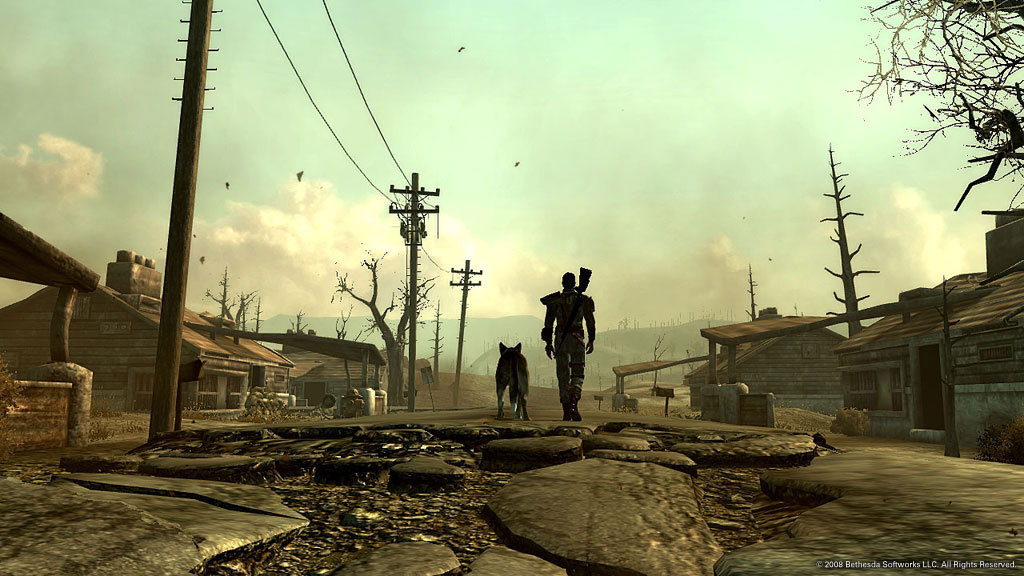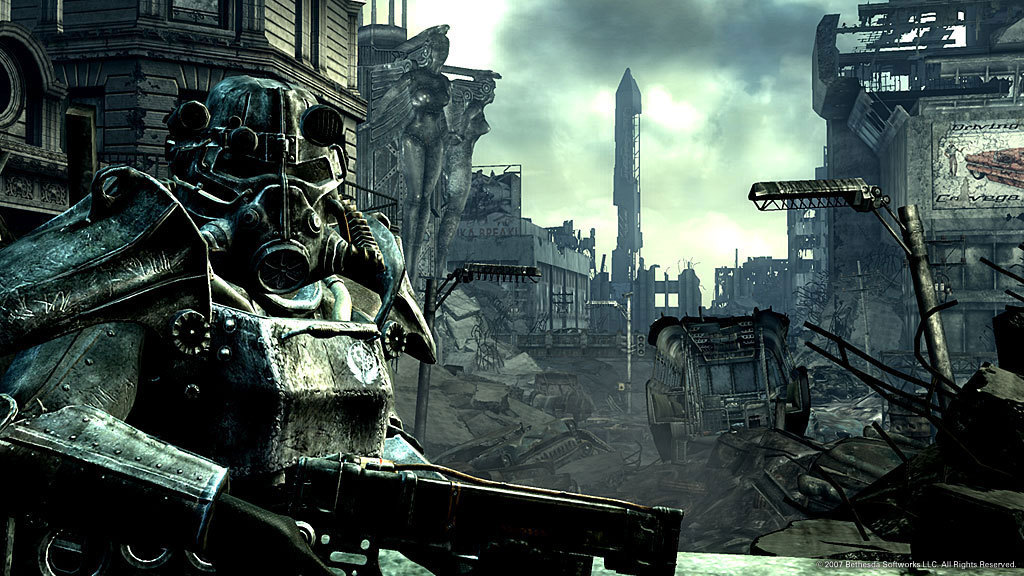Cast your mind back to 2008. Fallout 3’s launch is on the horizon, and excitement surrounding it is sky-high. Not only is it the return of a beloved franchise that many feared would never return to the limelight after a ten-year hiatus, it’s also coming back under a different developer, and in a form that’s radically different from what the series has been known for to this point. And yet, coming off the back of instant classics like Morrowind and Oblivion, Bethesda Game Studios is inspiring a great deal of confidence in the direction it’s taking the series. In October of that year, Fallout 3 releases, and almost instantly, it cements a place for itself as one of the greatest games ever made, and that’s a moniker that it still holds to this day, more than a decade and a half later.
Right now, in 2024, interest in Fallout has flared up again for obvious reasons, even though it’s been six years since the series’ last game came out (and nearly a decade since the last mainline single player instalment). Amazon Prime’s Fallout TV show has garnered widespread acclaim from nearly everyone that has seen it, which in turn has resulted in people going back to the games in droves, either to re-experience them, or to dive into their offerings for the first time thanks to the excitement surrounding the Amazon series. And amidst these re-examinations of the Fallout games, it’s still hard not to be impressed by what an absolute juggernaut Fallout 3 was back when it first came out- and continues to be even now, even if several aspects of the experience (especially from a technical perspective) do show their age.
[embedded content]
There’s obviously a lot to love in Fallout 3, but as is the case with the vast majority of Bethesda Game Studios’ RPGs, the star of the show here is probably the open world, which continues to be an impressive accomplishment even now, at a time where open world games are a dime a dozen. Reactiveness, interactivity of systems, and emergent gameplay have been Bethesda’s bread and butter for as long as anyone can remember, and there are few games under the studio’s belt that embody those qualities as well as Fallout 3 does. Exploring the wasteland in Fallout 3 felt constantly rewarding, not only because of the many secrets, quests, and what have you it had tucked away for players to find in every corner, but also because simply messing about with its many systems and seeing how the game would react made the entire experience a wildly unpredictable one. Even now, it’s hard to find open world games that are as ridiculously immersive and as dangerously addictive as Fallout 3 was (and still is).
Its post-nuclear apocalypse setting of the ruins of Washington D.C. (and its surrounding areas) also did a lot of the heavylifting in this area. Narratively, Fallout 3 borrowed a lot of elements from the games that preceded it, with familiar factions such as the Enclave and the Brotherhood of Steel having major roles to play in the story, but the Washington D.C. setting painted all of those familiar elements in a new light. Beyond that, simply learning more about how the Capital Wasteland had fared in the two centuries following Fallout’s global nuclear holocaust made for some of the game’s most gripping and fascinating bits. Even microscopic examples of that – like stumbling across an evocative bit of environmental storytelling or finding logs chronicling events that happened long before you read about them – stood out in memory.
Obviously, as Fallout fans would tell you, none of this would have had the kind of impact it did if not for the series’ trademark black humour. Post-apocalyptic settings are far from a rarity in entertainment media, but Fallout always managed to stand out in the crowd thanks to its bizarre elements, its excessive goofiness, its in-your-face satire, all providing excellent contrast to the series’ starkly depressing setting. And Fallout 3, despite coming from a studio that had never made a Fallout game before, captured that tone and aesthetic perfectly. Some series purists will admittedly disagree with that, and many do take umbrage with the game’s quality of writing, storytelling, and quest design, among other things. Fallout 3 defenders, however, would tell you that though it was certainly a different take on the series’ trademark tone and style, it wasn’t any less effective than what we had seen in the past.
But of course, there were areas where Fallout 3 deviated from its predecessors in radical ways. It was the series’ first 3D game, it was a fully open world experience, it was played from a first-person perspective (with a third-person option also available) rather than a top-down one, and combat was completely redesigned. With changes this significant, things could have easily gone wrong for Fallout 3 and Bethesda- though it’s fair to say that the 2008 RPG managed to stick the landing with its attempts at redefining what a modern Fallout game could be.
Out of all the areas, the one where it probably stumbled more than in the others was the combat, where Fallout 3 functioned primarily as a shooter. Its real-time combat mechanics were admittedly rough (which is probably a generous way to describe them), and it’s easy to see why there was a not insignificant contingent of people that weren’t too crazy about how drastically the game shook up the series’ formula in this area. But even with its combat, Fallout 3 did some incredible things- V.A.T.S. being chief among them. Now a staple of the franchise, back in 2008, V.A.T.S. was nothing short of a stroke of absolute genius, with Bethesda managing to find an excellent way to blend real-time combat with the series’ turn-based roots.
With a massive open world setting that was begging to be thoroughly explored, all of it drenched in atmosphere to completely immerse you in its apocalyptic fiction, Fallout 3 was – and there’s not a hint of hyperbole here – an absolute revelation when it first launched. In true Bethesda fashion, even upon release, the game had its fair share of technical issues, many of which weren’t exactly minor ones (while on PS3, the game was damn near unplayable), and yet, in spite of those issues, and in spite of a fair bit of pushback from series veterans who felt it deviated from Fallout’s core identity too much, Fallout 3 exploded in popularity as soon as it hit the shelves. It’s been nearly sixteen years since then, and several more Fallout titles have come out, but none of them have managed to replicate the nuclear impact with which Fallout 3 landed back in the day.
Last year, it emerged from leaked Microsoft documents (courtesy of the FTC trial) that a Fallout 3 remaster was potentially in development, or, at the very least, had been at one point. Whether or not that project is still alive and part of the company’s plans remains to be seen, but given the popularity of the 2008 classic, the renewed interest in all things Fallout, how long it’s been since the last Fallout game came out, and how long it’s going to be before the next one arrives- we desperately hope that the remaster is indeed real. Going back to Fallout 3 even in its original form is still an absolute treat, but going back to it with a remastered and enhanced version would be a dream come true.
Note: The views expressed in this article are those of the author and do not necessarily represent the views of, and should not be attributed to, GamingBolt as an organization.




Comments are closed.